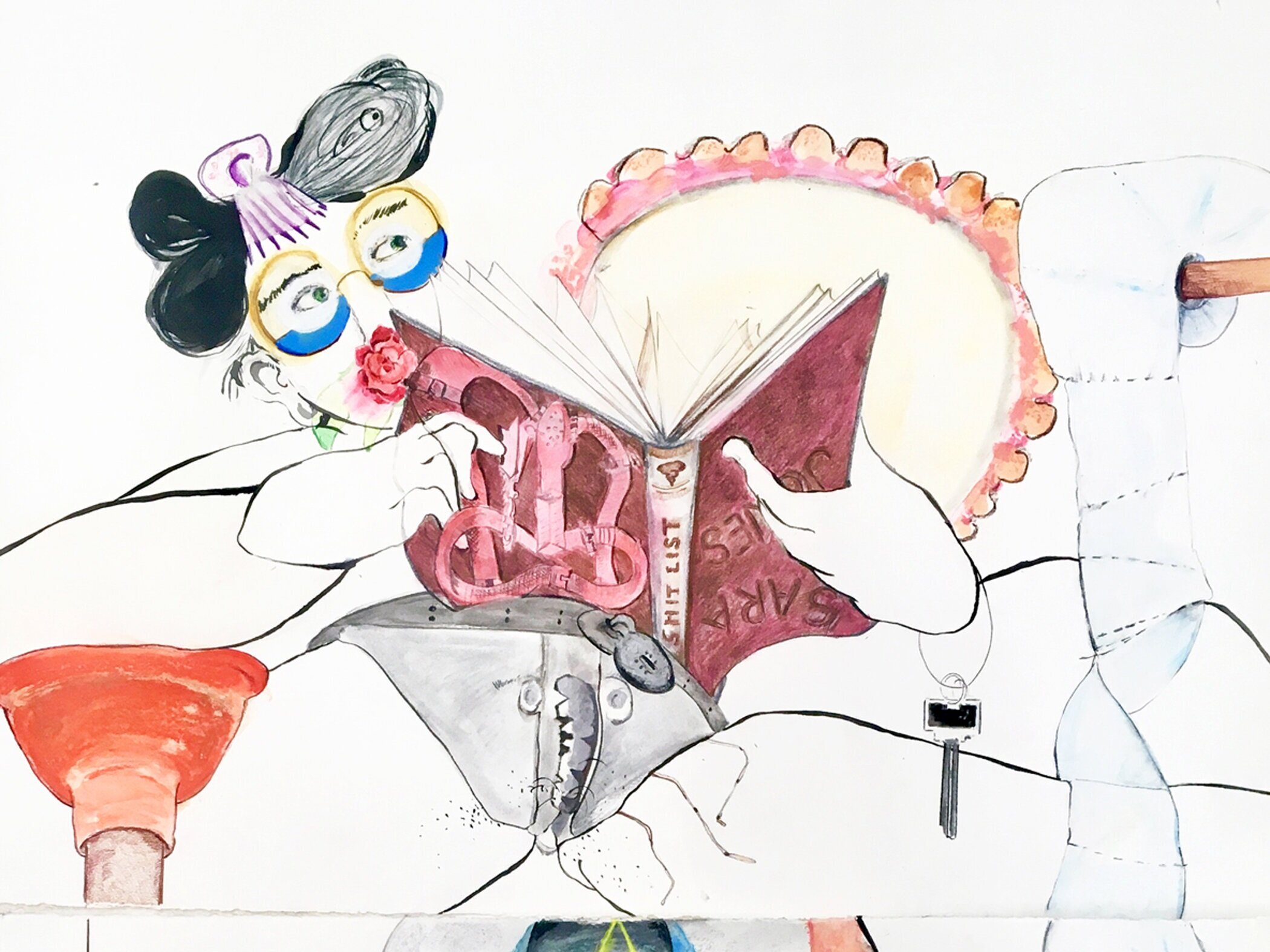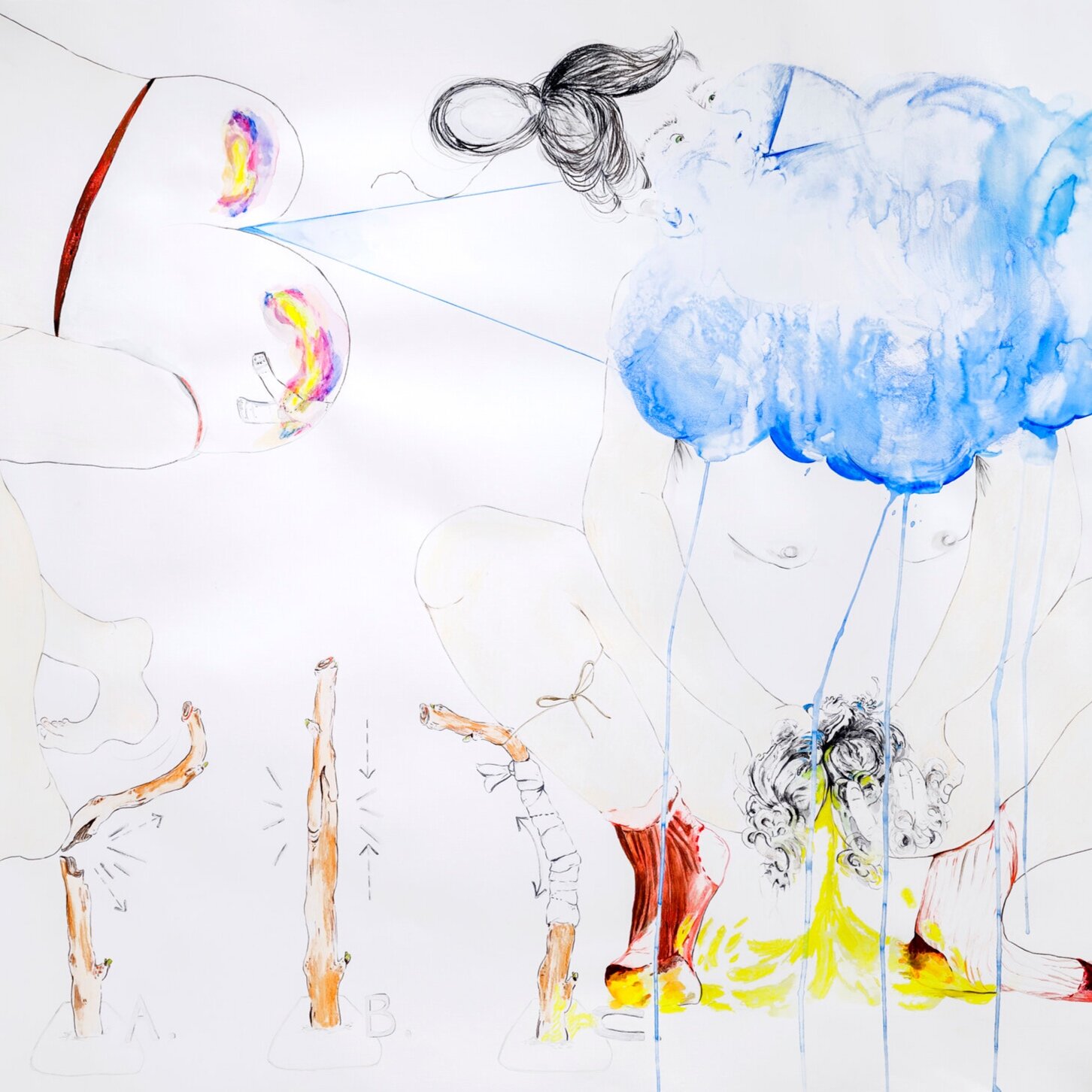Sarah Mihara Creagen (NYC)
Opening: Nov 8, 2019, 7:00 PM
Artist Talk: Nov 9, 2019, 3:00 PM
The Sisters’ Fart Corner presents a body of drawings and comics that explicitly explores Creagen’s mixed-race Japanese-Canadian heritage and investigates areas of representation (contemporary/historical art, and medical) connected to women’s bodies in sex and sexual health.
Born in Nova Scotia, Sarah Mihara Creagen is a white passing mixed-race queer artist currently based between Brooklyn and Toronto. She received her MFA from Hunter College in 2018. Creagen was the recipient of the Kossak Travel Grant which enabled her and her younger sister to travel to Japan in 2018. They retraced family roots, looked at art and ate their way across the country. Creagen has exhibited work in Toronto and New York. She has had recent solo exhibitions at SPRING/BREAK Art Show and Hercules Gallery in New York, and is a 2018/2019 Queer | Art Fellow working with Neil Goldberg.
Creagen's work was also presented in collaboration with Art POP, Everything that happens, happens in the verbs, at Studio Rialto, Sept 25-29, 2019.
Sarah would like to gratefully acknowledge the support of a fall 2019 Cottage Studio Residency at the Glenhyrst Art Gallery of Brant where she was able to create works for The Sisters' Fart Corner.
Related Events
Talk
A Conversation Between Two Queer Figurative Artists
Saturday, Nov 9, 2019, 3:00 PM to 5:00 PM
Exhibition Text
Dirty Play
by Ariane Fairlie
What do botany, BDSM, and medical examinations have in common? On the surface, you would be forgiven for assuming nothing, but Sarah Mihara Creagen artfully threads an unlikely line of investigation through all three, engaging the various tools and apparatuses used by each group as starting points to discuss sex and sexuality, care, health, and consent. Creagen’s artwork explores these themes as they relate to her experiences with IBS, and her identity as a queer, white-passing cis woman with mixed-race Japanese heritage.
Working primarily in drawing, as well as installation and animation, Creagen creates a visual language that references medical texts, comics, botany, and pulp magazines, among other influences. Drawings such as Sisters’ Fart Cornerare inspired by Japanese Edo-period fart competition scrolls. Using the historical form to draw-out personal themes, Creagen’s large scale drawings are in direct contrast to the original scrolls (approx. 12 x 400 inches in length). The original scrolls were, as far as we know, entirely created by men with men as their primary subjects, and it’s unknown and unclear if they were meant to contain political commentary. Creagen subverts the form with the insertion of her personal narratives.
Creagen employs humour in her practice to confront subjects conventionally considered uncomfortable, such as flatulence and bodily fluids. Boldly dominating the composition, the characters of Creagen’s work propel themselves across the page with great gaseous farts or powerful streams of piss. The absurd scenes combined with the confident and easy demeanour of the characters provide the playful conditions to explore these taboo subjects.
Much of Creagen’s art pushes against current social norms. She describes the BDSM influences in her drawings as primarily an interest in power dynamics. Here BDSM is a tool to safely and consensually explore the exchange of power through the performance of different roles.
In a similar vein, her use of plant imagery also illustrates the dynamics of social relations. Staking, for example, is a strategy used by gardeners to encourage a plant’s growth. The gardener inserts a post into the ground and props up a drooping limb to support the plant from failing. Staking is used in Creagen’s drawings as a tender visualization of care and support versus restraints. Resurrection plants (from the poikilohydric plant family), feature in many of her drawings. These plants can withstand extreme drought for months and even years by drifting into a dormant state. Though it appears to be dead, as soon as water is reintroduced to its root system the resurrection plant springs back to life within hours. It can shift in and out of this period of life and lifelessness many times. Creagen draws upon these qualities of resilience and hope to speak to themes of self-care, isolation, and renewal.
Throughout Creagen’s work, apparatuses intersect and morph into each other; the speculum, the dildo, the chastity belt, ropes, and bondage implements, gloves, a switch/ twig. The interplay between soft bodies, sterile medical instruments, erotic sex objects and botanical elements, acid colours, and voluptuous lines, enriches Creagen’s work. She expertly weaves these elements together, formulating rich connections through dirty play.


